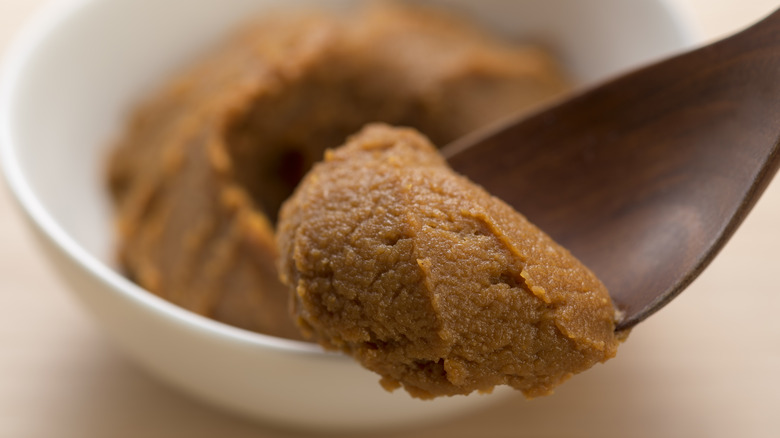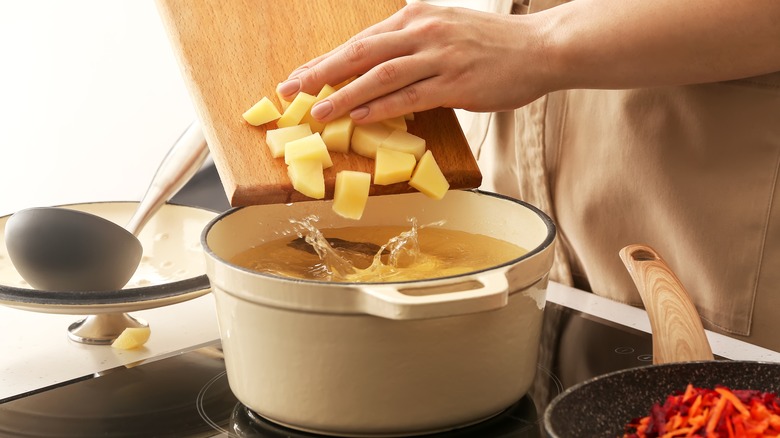What To Do When You've Added Too Much Miso To A Dish
Miso was to Japan during the Heian period (794-1185 CE), what foie gras was to New York City in the 1980s: an expensive and status-y spread that was slathered on various other foods by those who could afford to do so. Accordingly, the notion that one might add too much miso to a dish only came to exist later.
Nowadays, miso is used commonly as a flavoring for other dishes, from miso soup to miso salmon to all these other ways you can cook with miso. Accordingly, the question of what happens when you've added too much miso to a dish, not to mention whether there is anything that you can do to salvage said dish, is bound to come up from time to time in the normal course of cooking in the current day.
Made from soybeans fermented with bacteria and fungi and preserved using a large quantity of salt, miso is naturally packed with both umami and salty flavors. But when you add too much miso to a dish, what you're going to notice, predominantly, is excessive saltiness. Indeed, what celebrity chef David Chang asserts is wrong with some of the less-than-stellar miso he's sampled over the years is it makes everything taste too salty. Given that, it's very easy to wind up using too much miso in a dish.
Chang's go-to solution is adding butter. But we've got a few other savory hacks up our sleeve.
Butter's just one of a number of fixes for too much miso
Whenever David Chang of Momofuku fame realizes he's added too much miso to a dish, his go-to fix is to add butter "for balance." Butter not only contributes a subtle sweetness but also deposits a slight film on the tongue that somewhat inhibits the ability to perceive saltiness. Other dairy products will work the same magic on miso. So too will non-dairy milk such as oat or coconut.
If butter doesn't go with whatever it is you're making, another alternative is to add a splash of an acid – such as lemon or lime juice, or any kind of vinegar. Salt and acid suppress one another, particularly at higher concentrations. And, seemingly paradoxically, just as you can enhance the flavor of potatoes by adding a small amount of miso, you can also take down the saltiness of a dish that has too much miso by stirring in some sliced or chopped potatoes, which will absorb some of the excess salt.
Finally, a 2015 study published in the journal, Appetite, suggests that some people detect less saltiness in a dish when it's served at high temperatures — around 156 degrees Fahrenheit or above — than when it's served at a slightly cooler temp. So, if none of the other options mentioned resonate, you can always serve your dish extra piping hot.

